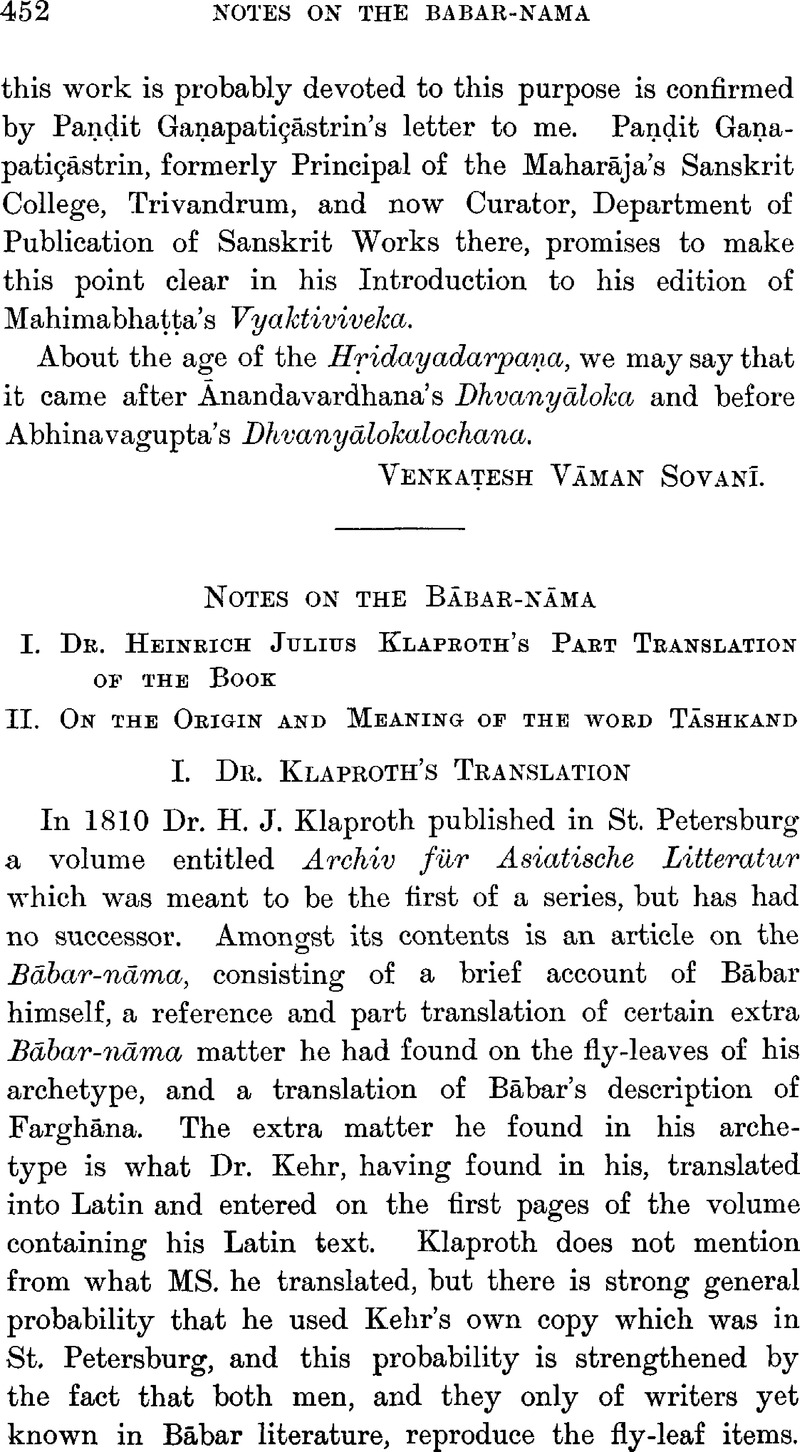No CrossRef data available.
Article contents
Notes on the Bābar-Nāma
Published online by Cambridge University Press: 15 March 2011
Abstract

- Type
- Miscellaneous Communications
- Information
- Copyright
- Copyright © The Royal Asiatic Society 1909
References
page 453 note 1 For full particulars of the fly-leaf entries, so far as they can be known from Kehr's translation of them, see JRAS. July, 1908.Google Scholar
page 453 note 2 Archiv, etc., B.M. press-mark 441 + 24.
page 454 note 1 JRAS., July, 1908,Google Scholar para. No. 6.
page 455 note 1 DrSchuyler, (Turkistan, Low, Sampson, 1876Google Scholar) spells Khujend “Hodjent” both in map and text. He also writes “Hodjas” (sea index s.n.). This variant may serve to partly explain Klaproth's “Hūdschī”.
page 455 note 2 As to the suggestion of a year of the Turkī cycle, Mr. Beveridge has given me the following note:—“As regards the mysterious word sīmū tū, I make two suggestions, neither of them, however, having weight One is that sīmū tū may be a corruption of Sin-mao, the Chinese name for the 25th or 28th year of the Jovian cycle. (See Prinsep's Useful Tables, p. 31.) If the note were made by a Kāshgharā, he might have inserted the Chinese year. Sin-mao means Iron-ape, and seems to correspond to Maimūn (ape), one of the years of the Igurian cycle. This leads me to my second suggestion, which is that sāmū tū is a mistake for maimūn. Unfortunately, I cannot make the Maimūn year fit in with 957 A.H. It may be that if the Igurian cycle be taken as beginning with Taushqān, the Hare, as the Chinese does, Maimūn, the Ape, could be brought to harmonize with 957 A.H., and thus to explain Klaproth's sīmū tū.”
page 456 note 1 Turkestan (Freiburg am Breisgau, Herder, 1900), pp. 149–50. This article was in print before I became aware of the death of Mr. F. von Schwarz.
page 456 note 2 The Russian Government has adopted the form kend, and this is found in many, books.
page 457 note 1 Haydarabad Codex, f. 5b.
page 458 note 1 See ![]() , trs. Raverty, index s.nn.
, trs. Raverty, index s.nn.
page 458 note 2 Tārīkh-rashīdī and trs. Elias, Ney and Ross, E. Denison, p. 180, n.Google Scholar
page 459 note 1 Perhaps these numbered places are groups of adjacent hamlets or villages using the same water-supply.
page 459 note 2 Haydarābād Codex, f. 4b,
page 459 note 3 Expédition Scientifique Française, (Leroux, 1879), ii, pp. 3 and 181.Google Scholar
page 459 note 4 Mr. Ujfalvy's reference to Yāqūt's book is “iv, 13 and 227”.
page 460 note 1 The Turkistan Region, Simla, trs. 1882.Google Scholar




